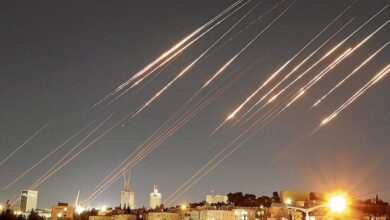Will There Be More Executions for the Protests in Iran?
With the recent news of the execution of Mohammad Mehdi Karami and Mohammad Hosseini, the protests subside, but survive and radicalise. These are the 4 protesters executed by the regime under Islamic law .

Photo: G.Garitan
LatinAmerican Post | Santiago Gómez Hernández
Listen to this article
Leer en español: ¿Habrá más ejecuciones por las protestas en Irán?
News of executions in Iran by the Ayatollah's regime against protesters keep coming. In recent days, the deaths of Mohammad Mehdi Karami and Mohammad Hosseini demonstrate the clear intentions of the government to severely persecute those who have shaken the status quo in the country.
Both Karami and Hosseini were charged with involvement in the killing of Basiji Ruhollah Ajamian during the protests. They were arrested on November 5 and sentenced to death a month later, in a trial that Amnesty International denounced took less than a week, which could have meant a violation of their due process rights.
The United Nations High Commissioner for Human Rights, Volker Türk, warned that “The militarization of criminal proceedings to punish people for exercising their fundamental rights – such as those who participate in organize demonstrations – amounts to murder sanctioned by the State". The statements add to the criticism that the Iranian government has received for the way in which it has decided to carry out legal processes and executions. What is criticized is precisely the veil of doubt (to say no more) that emerge from these trials that clearly point to protesters who actively participated in the social protest that rocked the regime due to the death of 22-year-old Mahsa Amini while in the custody of the morality police.
The Moharebeh Law, the Legal Excuse for Executions
Legally, the Iranian government is using Islamic law to execute the four protesters. This is the Moharebeh, which means "an affront against God." It is not the first time that this argument has been used to persecute political opponents. Already in 2016, according to DailyO, 44 people were executed under this charge or crime. Most of these, political dissidents accused of "spreading corruption on earth."
The striking thing about the Moharebeh is that the crimes that can be related are not clearly defined, since Iran argues that it is an Islamic regulation interpreted by the theological elite in Iran. However, this elite is the same one that governs the Islamic country.
The Islamic Penal Code 279 and Article 281 of Iran defines Moharebeh as "taking out a weapon against the life, property, or chastity of the people or to cause terror (…) where thieves or smugglers who resort to weapons enter and disturb security Public or highways will be considered Mohareb (Belligerent against God)”. The punishments are "death by hanging, crucifixion, amputation of the right hand or left foot, or banishment."
The 4 Executed by the Iranian Government
In clashes with police, protesters stabbed to death 'basiji' Ruhollah Ajamian, a member of a paramilitary group. The murder of Ruhollah Ajamian has been the reason the Government has captured 16 protesters, and sentenced four of them to death. The other cases are the already known Mohsen Shekari (executed on December 8, 2022); Majidreza Rahnavard (executed on December 12, 2022); and Syed Mohammad Hosseini and Mohammad Mehdi Karimi (executed on 7 January 2023). Karami and Hosseini were arrested on November 5 and tried and sentenced to death on December 5, after a trial of less than a week, according to Amnesty International.
Also read: Legion of Freedom, the dissident group that is fighting for the end of the Russian invasion in Ukraine
What Comes for the Demonstrators Still Imprisoned?
The government of Ayatollah Ali Kahmeini has systematically used executions as a method of controlling any vice or "rebellion." In 2022, NGOs in favor of human rights denounced 504 executions under the figure of the Moharebeh. And Amnesty International warns that 26 more protesters are at risk of being next, of whom 11 have already been sentenced to death and 15 are still on trial.
The Protests Continue, but More Focused
For their part, the anti-government demonstrations continue, although much more focused. The recent executions appear to have generated some suspicion among protesters in various parts of the country. However, according to Reuters, the areas with a large Sunni presence (minorities in a traditionally Shiite country) maintain the protests. Additionally, with the death of demonstrators and the display of their bodies, the only thing that the Islamist regime is generating is creating a clandestine and more radical opposition.
This would indicate that the Iranian government will maintain its zero tolerance stance, as it feels it has results in reducing the number of demonstrations and the number of protesters. This leaves the “rebels” imprisoned at the hands of a regime unwilling to show weakness and a citizenry filled with fear and rage as they keep protests in Iran underground.


